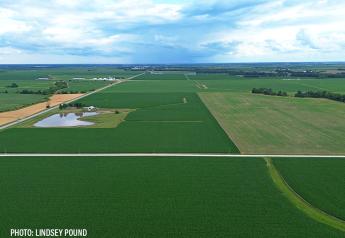Fertilizer and Grain Industries Speak to Issues with CSX
Last Wednesday, a “listening session” before the U.S. Surface Transportation Board (STB) in Washington included 24 organizations and companies testifying on issues related to CSX’s performance.
Included in that group was The Fertilizer Institute (TFI) and the National Grain and Feed Association (NGFA).
CSX is the No. 3 railroad in the U.S. The STB has been reviewing CSX’s performance weekly and talking to senior management for months.
The scrutiny comes after new President and CEO E. Hunter Harrison implemented “precision scheduled railroad,” after his appointment to the role in March.
Since then, customers have cited service issues such as longer transit times, unreliable switching operations, inefficient car routings, and poor communications with CSX contacts.
NGFA said some of its members are operating at 70 to 80% of capacity due to the lack of inbound supply. The service disruptions have led to additional freight costs for truck movements; lost sales of commodities and ingredients; changes to supply chain and customer relationships; reduced operating efficiency at processing plants, flour and feed mills; and economic losses incurred by rail car lessees and those operating private car fleets.
"Combined, these amount to literally millions of dollars of additional shipping costs and lost earnings to our industry," NGFA President Randy Gordon said.
The Fertilizer Institute stated for its members a major point of frustration was a decision by CSX to close longstanding interchanges without notice. As a result, cars were sent to these dead-end locations and it often took weeks before they were turned around to a working interchange. One TFI member had cars in an endless loop for 2 months while the end-destination was 10 miles away.
A TFI member company had a shipment delayed due to switching errors and extended yard dwell times, and its product had sat in the cars too long so the company had to curtail production which resulted in more than $500,000 in lost sales and costs.
At the listening session CSX’s Harrison apologized to shippers for service disruptions, which he blamed on derailments and internal mistakes, including closing too many yards.
And then speaking after Harrison, Cargill Vice President Brad Hildebrand asked the STB to publish the minutes of its weekly calls with CSX management. In a Sept. 12 letter, USDA Secretary Sonny Perdue told the it should require CSX to provide performance data “wider in scope, more granular in detail, and fully explained.”
On October 5, CSX reported performance improvements including:
- Since mid-July, system-wide train velocity on CSX’s 21,000-mile network has increased by approximately 16 percent, and is now higher than the 2016 full-year average.
- Transit times for scheduled merchandise trains have returned to a normal range, and are lower than transit levels at the outset of CSX’s Precision Scheduled Railroad implementation in first quarter 2017.
- Average terminal dwell – the number of hours cars spend in terminals between their origins and destinations – has steadily improved over the last two months and is currently 11.2 hours, declining more than 15% since the summer. Dwell is now lower than 2016 full-year average.
- CSX’s hump terminals continue to operate fluidly, within planned parameters and with capacity available to handle additional freight requirements.







